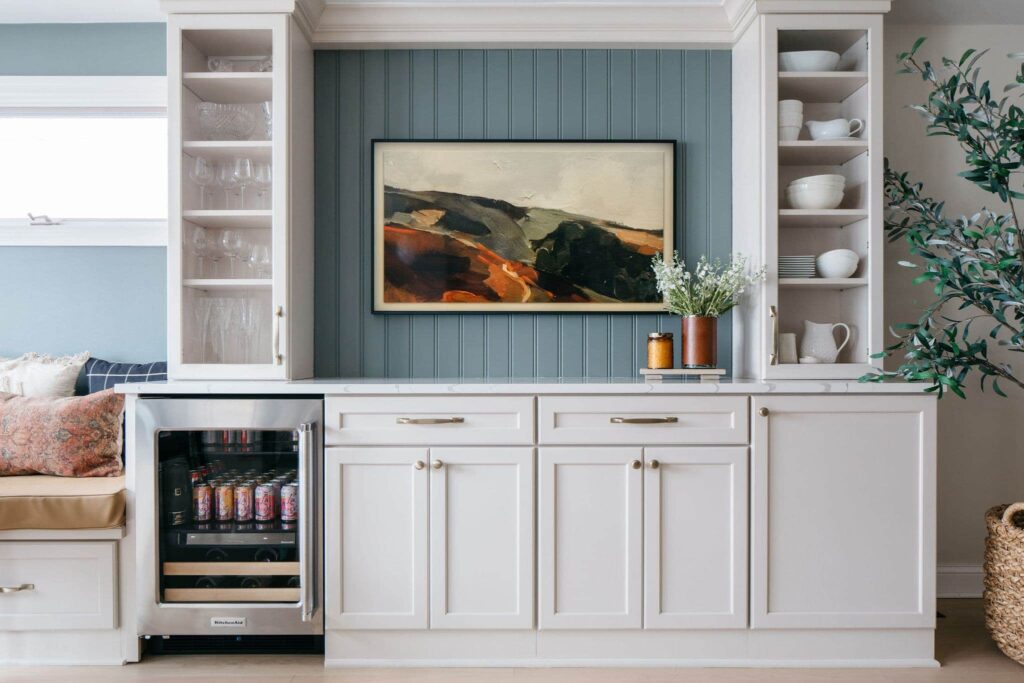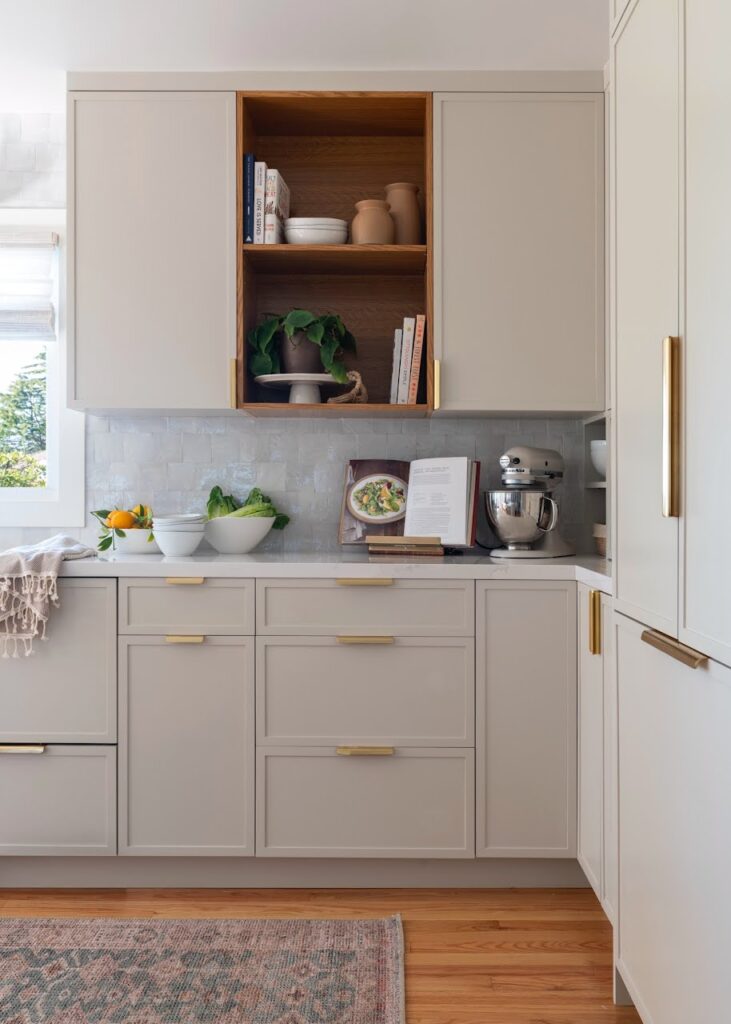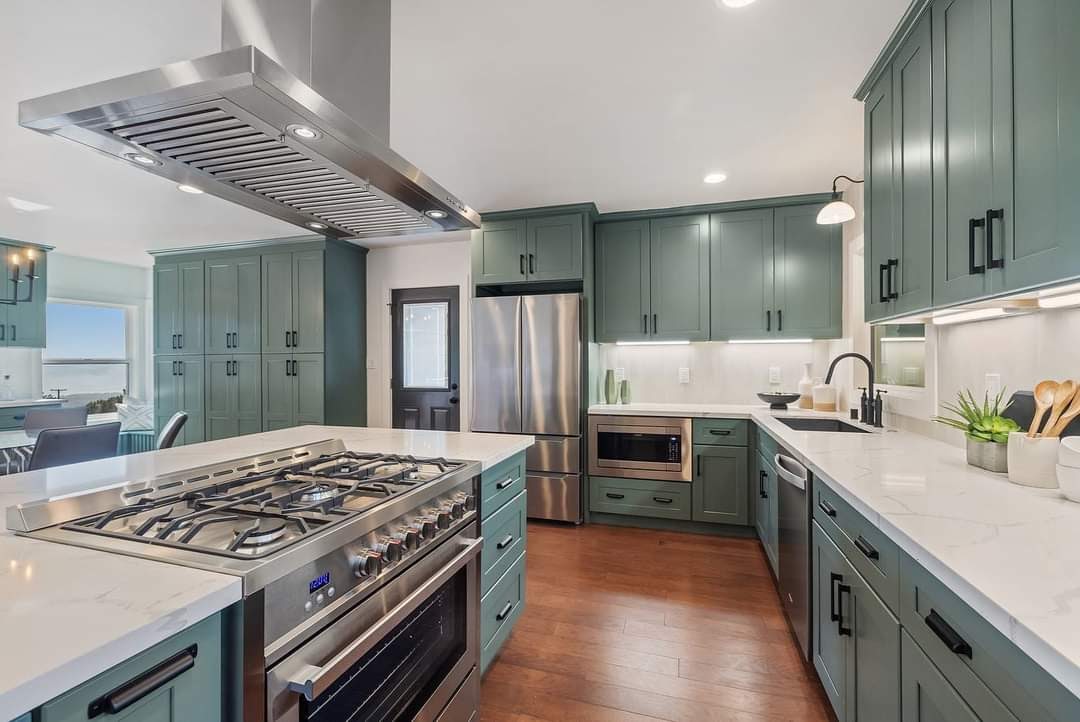When exploring cabinet construction, three primary types stand out: framed, frameless, and inset. Framed cabinetry represents a timeless tradition, while frameless options enjoy widespread popularity. At the peak of sophistication lies inset cabinetry. Delving into the nuances of each, we uncover their distinct advantages and disadvantages.
Framed Cabinetry
American cabinet makers have long upheld the tradition of framed construction for cabinets. In this method, the rails and stiles converge to create a 1-1/2 inch face “frame” at the forefront of the cabinet box. This frame, reminiscent of a flat picture frame, is affixed to the door front, lending an extra dimension to its appearance.

What are the advantages of framed cabinetry?
Within framed cabinetry, the doors find their anchorage in the frame, thus imparting robustness and resilience to the cabinet structure. Hinges are affixed directly to the frame face and shelves, offering stability. While typically adjustable, this feature isn’t universal. Framed cabinets offer versatility in door styles, accommodating partial and full overlay, as well as inset designs. This array of options opens up a realm of design possibilities, allowing for a personalized and bespoke aesthetic in your cabinetry.

There are 4 common overlay option you can choose from when dealing with framed cabinetry. This is the amount of the door lays over the face frame on all sides.
- 1 1/4 inch overlay (full overlay)
- 1 inch overlay
- 3/4 inch overlay
- 1/2 inch overlay
What is frameless cabinetry?
Frameless cabinet construction, originating from European craftsmanship, has gained traction among American homeowners drawn to sleek and contemporary cabinet designs. Often referred to as “full access” cabinetry, frameless construction eschews the traditional face frame, prioritizing accessibility. This design ethos is upheld through sturdier box construction. Exclusively featuring full overlay doors, frameless cabinets streamline their aesthetic by attaching hinges directly to the sides of the cabinet box, ensuring a seamless and modern look.

What are the advantages of frameless cabinetry?
In frameless construction, cabinets boast a clean, unadorned look as they lack a front face frame attached to the cabinet box. This minimalist approach results in sleek, flat door and drawer fronts, offering a versatile aesthetic compatible with various design themes throughout the home.
One notable feature of frameless cabinets is the absence of a center stile dividing the two cabinet doors. This design choice not only enhances accessibility to stored items but also maximizes storage space. Furthermore, the shelves are typically adjustable, allowing for customizable organization.

Another advantage lies in the larger size of drawers in frameless cabinetry. This is made possible by the space saved from omitting the front face frame, contributing to enhanced functionality and storage capacity.
What are inset cabinets?

Inset cabinetry represents a refined approach to cabinet construction, characterized by doors and drawers that snugly fit within the face frame openings of the cabinet. This meticulous design choice offers a full view of the cabinet frame, with minimal spacing or gaps between the various components. The result is a seamlessly integrated appearance, exuding an aura of craftsmanship and precision.
What are the advantages of inset cabinetry?
Inset cabinetry presents a hallmark of clean lines and flush, inset doors, offering a departure from standard cabinets with full overlay doors. This design choice not only lends a refined aesthetic but also allows for personalization through various inserts. Whether opting for beaded or non-beaded inserts, you have the freedom to curate a bespoke look that harmonizes with your home’s décor.
In beaded inset construction, the meticulous edge detail integrated into the cabinet door exudes an air of fine craftsmanship, elevating the overall appeal.

Furthermore, the versatility of inset cabinets extends to a wide array of modifications, including options for colors, finishes, moldings, and embellishments. These customizable features empower you to craft cabinets that embody the timeless allure and understated elegance of transitional styling, celebrating heritage while seamlessly blending with contemporary aesthetics.
Still not sure which cabinets are best for you and need a little help?

